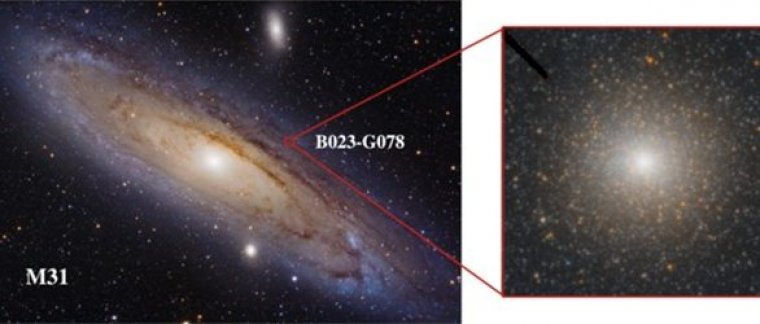| News / Space News |
Astronomers confirm intermediate-mass black hole in Andromeda galaxy
Astronomers at the University of Utah have confirmed an intermediate-mass black hole, an elusive rarity long sought by scientists. The object is hidden in B023-G078, a star cluster in the Andromeda galaxy, the nearest spiral galaxy.

Astronomers confirm rare black hole in Andromeda galaxy. Photo: Iván Éder, HST ACS/HRC
With a size of 100,000 solar masses, the B023-G078 intermediate-mass black hole is not as large as black holes at the center of galaxies, but larger than black holes caused by supernovae.
"We have very good detections of the biggest, stellar-mass black holes up to 100 times the size of our sun, and supermassive black holes at the centers of galaxies that are millions of times the size of our sun, but there aren't any measurements of black hole masses between these," said Anil Seth, senior author of the study. "This discovery fills the gap."
Long thought to be a group of stars held together by gravity, known as a globular star cluster, the researchers argue that B023-G078 is actually a stripped nucleus -- remnants of small galaxies that collapsed into larger galaxies, their outer stars torn asunder.
What remains is a tiny, dense nucleus that orbits the larger galaxy, and at the center of that nucleus is a black hole.
With new data from Gemini Observatory, a program of NSF's NOIRLab, and images from the Hubble Space Telescope, the team calculated mass distribution in the object by modeling its light profile.
A globular cluster has a characteristic light profile and shape. B023-G078's light profile and shape indicated that the object couldn't be categorized as a globular cluster.
"We know big galaxies form generally from the merging of smaller galaxies, but these stripped nuclei allow us to decipher the details," said Seth.
Intermediate-mass black holes could contain the answers to questions about black holes at the centers of low-mass galaxies and how galaxies are built. (National Science Foundation)





